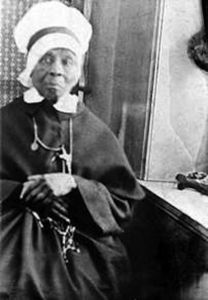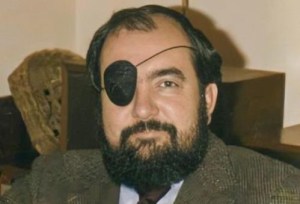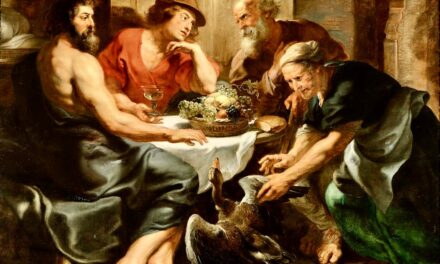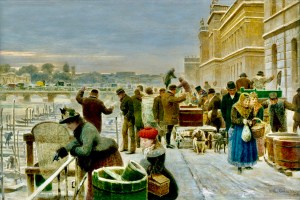We support our Publishers and Content Creators. You can view this story on their website by CLICKING HERE.
Mother Mary Lange lived to be more than ninety years old, dying in 1882. Much changed in Baltimore and in the United States during her long and self-sacrificial life. But one thing that never changed was her loyalty to the Catholic Faith and her tireless life of service to Christ and the Church He founded. Well may we sing her praises!
Many Catholics will be aware of the astonishing story of Sister Mary Wilhelmina, the Benedictine nun whose body was discovered to be incorrupt when it was exhumed in May of last year, four years after her death. When the sisters of the religious order she’d founded, the Benedictines of Mary, Queen of Apostles, decided to exhume her body so that it could be reinterred in the convent chapel, they expected to find nothing in the grave but bones. To their astonishment, Sister Wilhelmina’s body was incorrupt, as was the religious habit in which she’d been buried.
The coffin had been damaged, but the body inside was almost perfectly intact. It had not been embalmed, nor was the simple, wooden coffin protected by any outer burial chamber. There was, therefore, no natural reason for the body’s incorruption. For the faithful sisters of her order and for the thousands of pilgrims who have visited the convent in the months following her exhumation, there is little doubt that the preservation of Sister Mary Wilhelmina’s body is miraculous.
Such a miraculous blessing should be seen as God’s gift of the divine stamp of approval to the exemplary life of sanctity and fidelity that Sister Mary Wilhelmina lived. She was born Mary Elizabeth Lancaster in St. Louis, Missouri, in 1924 and was the descendant of slaves. At the age of seventeen, she joined the Oblate Sisters of Providence, an order of black nuns in Baltimore.
Faithful to her vows and her calling, she became dismayed at the chaos and crisis of faith that beset the Oblate Sisters in the confusion caused by the so-called “spirit of Vatican II.” The sisters forsook their habits and abandoned liturgical tradition, experimenting with sacrilegious novelties during the holy sacrifice of the Mass which had never been sanctioned by the Second Vatican Council or any teaching of the Church. As the sisters lost faith in Tradition, adopting modernist theology, they put their faith in the radical politics of the time, especially in the black power movement and other racially charged political perspectives. One sister even proclaimed to Sister Mary Wilhelmina that she was black first and Catholic second.
Wishing to escape from this toxic combination of modernism and racism, Sister Mary Wilhelmina founded the Benedictine Sisters of Mary, Queen of Apostles in 1995, when she was seventy-one years old. The new religious order returned to tradition, celebrating Mass in the traditional form and being served liturgically by the Priestly Fraternity of St. Peter.
Sister Mary Wilhelmina is an inspiration, to be sure. She is now venerated by tens of thousands of Catholics, thousands of whom have visited the abbey church in Gower, Missouri, where her body now rests. She is, therefore, hardly unsung and does not really qualify as one of the unsung heroes of Christendom that we’re celebrating. As such, we will now turn our attention to another African American defender of the Faith who is not as well-known. This is Mother Mary Elizabeth Lange, the woman who founded the Oblate Sisters of Providence, the order that Sister Mary Wilhelmina had joined as a seventeen-year-old.
Mother Lange was born Elizabeth Clarisse Lange in around 1789 in a Haitian community in San Domingo. During the Haitian Revolution in the 1790s, in which self-liberated slaves rose against their French colonial rulers, Lange’s family fled as refugees to Santiago de Cuba, where she received a good education. Leaving Cuba in the early 1800s, Elizabeth Lange immigrated to the United States. According to the oral tradition of the Oblates of Providence, she arrived first in Charleston, South Carolina, then traveled to Norfolk, Virginia, before settling in Baltimore, Maryland, in 1813.
At this time, the free black population in Baltimore already outnumbered the slave population. In addition, there was a considerable population of French-speaking African Caribbeans who, like Lange’s own family, were refugees from the Haitian Revolution. Wishing to minister to the educational needs of this community, Elizabeth Lange founded the Oblate Sisters of Providence in 1829, assisted by a French priest, Fr. James Joubert.
Sister Mary Lange, as she now was, with three other founding sisters, opened a Catholic school for girls for twenty students in a rented house at 5 St. Mary’s Court in Baltimore. This was the beginning of St. Frances Academy, named in honor of St. Frances of Rome, whom Mother Lange had adopted as the patroness of the newly founded Oblates. St. Frances Academy was the first and is now the oldest continually operated black Catholic school in the United States.
Apart from their work with children, the sisters started teaching night classes for women and opened homes for widows and orphans. Then, during the cholera epidemic that struck Baltimore in 1832, Mother Mary Lange and three other Oblate sisters showed great heroism in ministering to the sick. Fr. Joubert recalled the words of the sermon that he gave to the sisters at the morning Mass before they began their ministry to the sick and dying:
I addressed a few words to them on the good work they were about to undertake, on the merits attached to the sacrifice they were making to God of the life He had given them. I pointed out to them the dangers to which they were obliged to expose themselves in thus devoting themselves to the service of the sick poor…. I told them that if God permitted that they should be victims of their zeal, they would die martyrs of charity.
In the event, one of the four sisters did indeed die this martyr’s death, a martyrdom of charity as Fr. Joubert declared.
Fr. Joubert died in 1843, after a devoted life of service to Christ and His Church and after fourteen years of service as chaplain to the small convent of black sisters, offering daily Mass and other spiritual support. As one who showed solidarity with the African American community at a time of slavery and general segregation of the races, he is himself an unsung hero of Christendom. Following his death, Sister Lange and the Oblate sisters found spiritual protection and assistance from St. John Neumann, who not only served the sisters’ spiritual needs but also introduced them to Fr. Thaddeus Anwander, who assumed the role of the Oblates’ chaplain.
Mother Mary Lange lived to be over ninety years old, dying in 1882. Much had changed in Baltimore and in the United States during her long and self-sacrificial life. Born only thirteen or so years after the Declaration of Independence, she would live through the nation’s fratricidal Civil War and would witness the abolition of slavery and new waves of immigrants from many parts of the world. One thing did not change in the midst of this torrent of transformation, however, and that was Mother Mary Lange’s loyalty to the Catholic Faith and her tireless life of service to Christ and the Church He had founded. Well may we sing her praises!
Republished with gracious permission from Crisis Magazine (February 2024).
This essay is part of a series, Unsung Heroes of Christendom.
The Imaginative Conservative applies the principle of appreciation to the discussion of culture and politics—we approach dialogue with magnanimity rather than with mere civility. Will you help us remain a refreshing oasis in the increasingly contentious arena of modern discourse? Please consider donating now.
The featured image is courtesy of Pixabay. The image of Mary Elizabeth Lange is in the public domain, courtesy of Wikimedia Commons.

 Conservative
Conservative  Search
Search Trending
Trending Current News
Current News 







